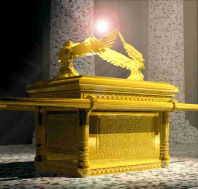Let’s look at some aspect of today’s Gospel reading from Matthew 13. Specifically, let’s look at the topic of thorns.
The Hebrew word sineh and its Greek translation batos both mean “thorn bush” (Exodus 3:2). The first time we see a reference to “thorns and thistles” (a Hebrew phrase referring to the entire class of thorns) is in the Book of Genesis. Thorns and thistles were not in the Garden of Eden in the original creation (Genesis 3:18). When man sinned, God cursed the gr ound with thorns—a negative, hurtful, even repulsive element that intruded into the original creation’s perfection.
ound with thorns—a negative, hurtful, even repulsive element that intruded into the original creation’s perfection.
Thorns appear next in the Bible as the burning bush in Exodus 3:2. Both Jesus and Stephen also use a special word (the Hebrew word sineh and its Greek translation batos both meaning “thorn bush”) to describe this bush’s thorny nature. Stephen describes the scene in Exodus with these words: “in the flame of a burning thorn bush” (Acts 7:30). Jesus says the same thing in Luke 20:37.
So why did God choose to appear inside thorns on the mountain where He later gave the Law—a law that serves only to remind us of our failure (Galatians 3:10–4:25; Hebrews 12:18–24)? Because the One who appeared in the Garden and pronounced the curse of thorns - now reappears in the midst of those very same thorns, but now promising deliverance.
Let’s move on further in the Scripture. The raw material from which the  Ark of the Covenant is crafted is a tabernacle made of Acacia wood (Exodus 26:29), a small tree or bush whose branches are covered with long thorns. God then directs that they cover this thorn wood with gold (Exodus 26:29).
Ark of the Covenant is crafted is a tabernacle made of Acacia wood (Exodus 26:29), a small tree or bush whose branches are covered with long thorns. God then directs that they cover this thorn wood with gold (Exodus 26:29).
Now, why would God take a cursed element of the Fall and beautify it with gold? Because thorns, fit only for fire, would now become the glorious dwelling place of God’s presence and His forgiveness.
Let’s look at a third example. The last place Israel encamps before they enter the Promised Land was called Abel-Shittim, which means “the Field of Thorns” (Numbers 25:1; Joshua 2:1). Israel was living in the Field of Thorns because the lawgiver Moses had not fully obeyed the law (Deuteronomy 32:49–51) and, in fact, he even dies without ever entering the Promised Land.
Yet once again, we see God delivering once again from the midst of the thorns. The Hebrew name of the man who follows Moses and leads God’s people to the “promised land” is Joshua which means, “Yahweh saves.” Greeks would translate his name as Iesous (Jesus). In that regard, the story foreshadows the One who will come after Moses, the one who shall “save His people from their sins” (as we read in Matthew 1:21). Jesus is that promised Prophet like Moses, but much more than a prophet. He is the One to lead God’s people into Paradise, the ultimate promised land.
God first promised His people redemption when He appeared in the midst of thorns at the Mountain of the Law (Mount Sinai). To fulfill that promise, Jesus appeared in thorns again, but this time bearing the curse of Mount Sinai’s law. He wore the crown we earned by our rebellion in Adam and by the years of ratifying Adam’s choice as we sin every day.
God intends to transform us, the descendants of the rebels in Eden, entangled as we are with thorns.
(Taken from, The Splendor of Thorns. Answers Magazine, May 27, 2009; last featured April 15, 2012)
Audio version of the homily is here: